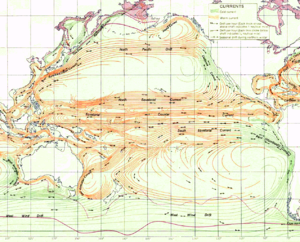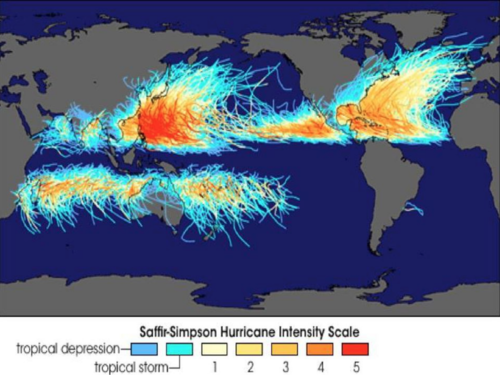Coriolis Effect (Weather)
According to proponents of the Coriolis Effect, in the Northern Hemisphere wind systems rotate counter-clockwise, and in the Southern Hemisphere wind systems will rotate clockwise. This is provided as evidence of the Coriolis Effect, and therefore, as evidence of the diurnal motion of the earth.
Prevailing Winds and Trade Winds
"Prevailing Winds" and "Trade Winds" are the world's permanent wind systems. When we look at the permanent wind currents of the world, we find the counter-clockwise rule of the Northern Hemisphere and the clockwise rule of the Southern Hemisphere to be untrue. Earth's large permanent wind systems are rotating in a contrary manner to the alleged Coriolis Effect.
Prevailing Winds of the Pacific (Click for bigger)
Hurricanes
Origin of Hurricanes
How do Hurricanes Form?
https://scijinks.gov/hurricane/
“ Hurricanes are the most violent storms on Earth. They form near the equator over warm ocean waters. ”
https://weloveweather.tv/hurricanes-equator/
150 years of tropical cyclone tracks through 2006
“ The graphic above clearly reveals that hurricanes (Atlantic basin, E. Pacific), typhoons (W. Pacific), and cyclones (Indian Ocean, Australia) rarely if ever form between 5 deg North and 5 deg South latitudes, respectively. ”
Wind Currents at the Equator
North Equatorial Current
https://en.wikipedia.org/wiki/North_Equatorial_Current
“ The North Equatorial Current is a significant Pacific and Atlantic Ocean current that flows east-to-west between about 10° north and 20° north. It is the southern side of a clockwise subtropical gyre. Despite its name, the North Equatorial Current is not connected to the equator. In both oceans, it is separated from the equatorial circulation by the Equatorial Countercurrent (also known as the North Equatorial Countercurrent), which flows eastward. The westward surface flow at the equator in both oceans is part of the South Equatorial Current. ”
Equatorial Counter Current
https://en.wikipedia.org/wiki/Equatorial_Counter_Current
“ The Equatorial Counter Current is an eastward flowing, wind-driven current which extends to depths of 100-150m in the Atlantic, Indian, and Pacific Oceans. More often called the North Equatorial Countercurrent (NECC), this current flows west-to-east at about 3-10° North ”
South Equatorial Current
https://en.wikipedia.org/wiki/South_Equatorial_Current
“ Ocean current in the Pacific, Atlantic, and Indian Ocean that flows east-to-west between the equator and about 20 degrees south. In the Pacific and Atlantic Oceans, it extends across the equator to about 5 degrees north. ”
On the role of the North Equatorial Counter Current during a strong El Niño
https://www.ocean-sci.net/14/633/2018/os-14-633-2018.pdf
Abstract: “ An analysis of archived data from the NEMO 1/12th degree global ocean model shows the importance of the North Equatorial Counter Current (NECC) in the development of the strong 1982–1983 and 1997–1998 El Niños. ”
Text: “ The forcing fields show that periods with strong westerly winds occurred at the Equator during the development of both the two strong El Niños studied and the warm pool event ”


